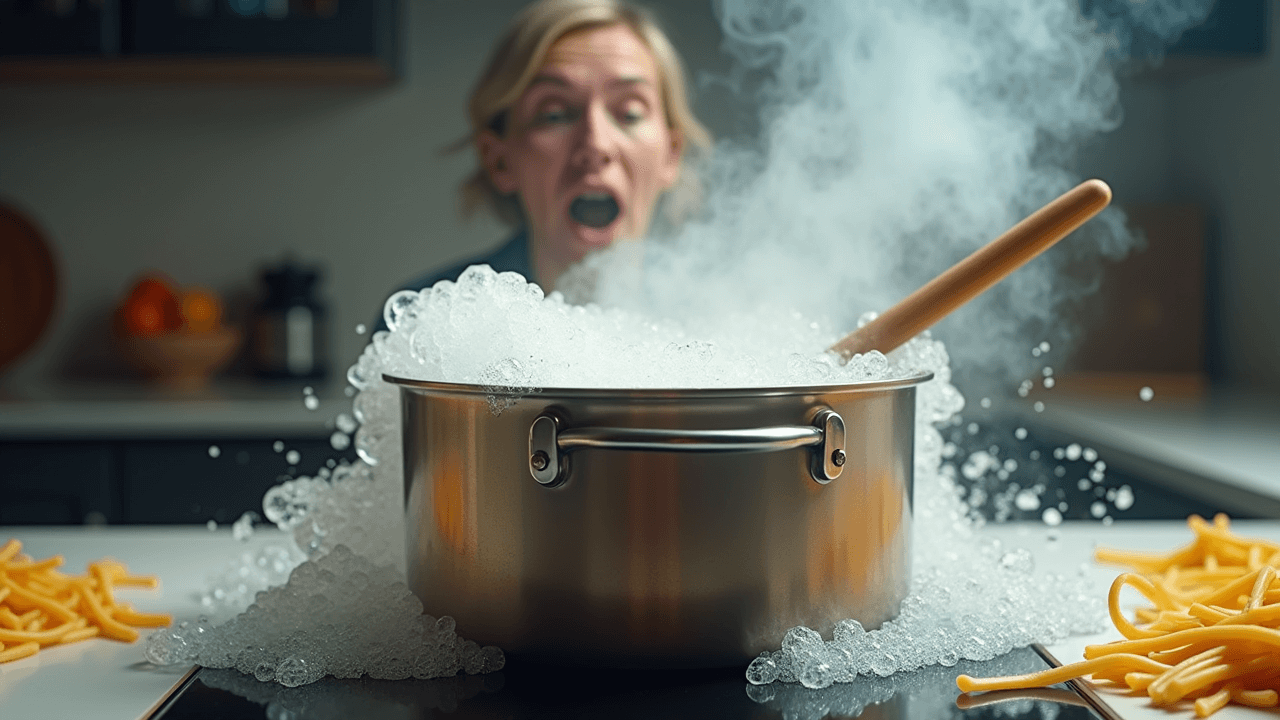Why Does Water Boil Over When Cooking Pasta?
Okay, but really, who hasn’t had a pot boil over on them? You turn your back for like two seconds, and suddenly it’s a Jackson Pollock situation all over your stovetop. But why? Why does something as simple as boiling water turn into such a kitchen catastrophe if you don’t babysit it? Well, today, we’re diving deep into the surprisingly complex world of boiling water, and with your help, we’re going to break it down.
What’s Really Happening When Water Boils?
So let’s start with the basics. Picture a pot of water on the stove. The bubbles you see? That’s just steam trying to escape. In plain water, bubbles rise and pop pretty quickly, and this all comes down to surface tension. But what is surface tension, exactly? It’s that skin-like effect on the surface of the water, caused by water molecules clinging to each other.
When you heat water, those bonds between molecules constantly break and reform as the molecules get more energized and turn into steam. Water has really high surface tension, so the steam bubbles pop almost as soon as they form. It’s a quick burst, and they’re gone.
Enter Pasta: The Game Changer
Now, here’s where it gets interesting. Once you add pasta to the mix, things change. Pasta brings starches to the water, and these starches increase the water’s viscosity (basically, it makes the water thicker). When this happens, the bubbles take longer to pop, and they start to build up. This is when things can get messy.
As the starch molecules thicken the water, they also trap bubbles. You’ve got a lot of steam trying to escape, and as it pushes the water upwards, it leads to that dreaded boil-over effect.
How Starches and Surface Tension Play a Role
The presence of starches is a major factor in boil-overs, but it’s not the only thing that can disrupt water molecules and cause trouble. Anything that changes surface tension will impact how the bubbles behave. Here’s where it gets a little counterintuitive: lowering the surface tension actually makes bubbles more stable!
Wait, really? You’d think making the bubbles weaker would help prevent a boil-over. But with lower surface tension, the water molecules are less tightly bound, allowing steam bubbles to form more easily. And instead of collapsing right away, they stick around longer, creating a recipe for disaster.
Kitchen Hacks to Prevent Boil-Overs
1. The Wooden Spoon Trick
One surprisingly simple trick is to lay a wooden spoon across the top of the pot. Why does this work? The spoon gives rising bubbles a surface to break against before they can build up too much pressure. Plus, wooden spoons are porous and absorb moisture, further breaking up the bubbles. It’s like giving your bubbles a designated chill-out zone to prevent them from taking over.
2. Add a Bit of Oil
You might have heard the advice to add oil to your pasta water, and it turns out there’s some science behind it. Oil is less dense than water, so it forms a thin layer on top. Since oil and water don’t mix, this layer acts as a barrier, making it harder for those big foamy bubbles to form and stick around.
3. Lower the Heat
Sometimes, the simplest solution is the best one. Lowering the heat reduces the amount of steam being produced. This gives the bubbles a better chance to escape without causing a scene, preventing a boil-over from even starting.
Understanding Boiling Water Can Improve Your Cooking
Controlling the bubbles and surface tension isn’t just about preventing a kitchen mess—it can actually improve your cooking. Gentle, even bubbles are perfect for simmering delicate sauces, for example. When you understand the science behind what’s happening, you can make those bubbles work for you, not against you.
FAQs
Why does water boil over when cooking pasta?
When pasta is added to boiling water, it releases starches that thicken the water, causing bubbles to last longer. These bubbles then build up and push the water over the edge of the pot.
Does adding oil to boiling water prevent it from boiling over?
Yes, adding a bit of oil can help. The oil creates a thin layer on the surface of the water that prevents large, foamy bubbles from sticking around and causing a boil-over.
Why does a wooden spoon prevent water from boiling over?
A wooden spoon gives the rising bubbles a surface to break against before they can build up too much pressure. Wooden spoons are porous, so they also absorb some moisture, which helps break up the bubbles.
What is surface tension, and how does it affect boiling water?
Surface tension is the force that holds water molecules together. In boiling water, surface tension is responsible for how easily steam bubbles form and pop. Lowering surface tension makes bubbles more stable, leading to a higher chance of a boil-over.
What’s the best way to prevent a boil-over when cooking pasta?
The easiest way to prevent a boil-over is to lower the heat. Reducing the heat gives the bubbles a better chance to escape without causing an overflow.
Your Hosts

Alex & Maria
Join Alex Thompson and Maria Davis as they navigate the fascinating world of knowledge. With their combined expertise and passion for learning, they simplify the complex and make every episode a journey worth taking.

